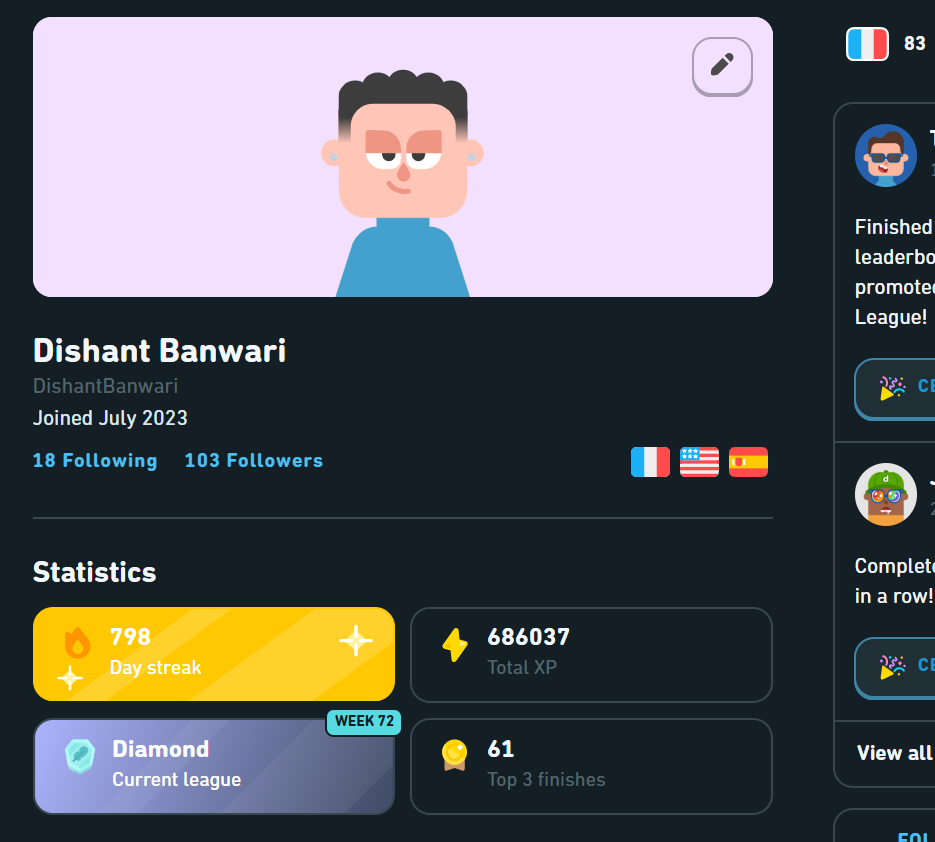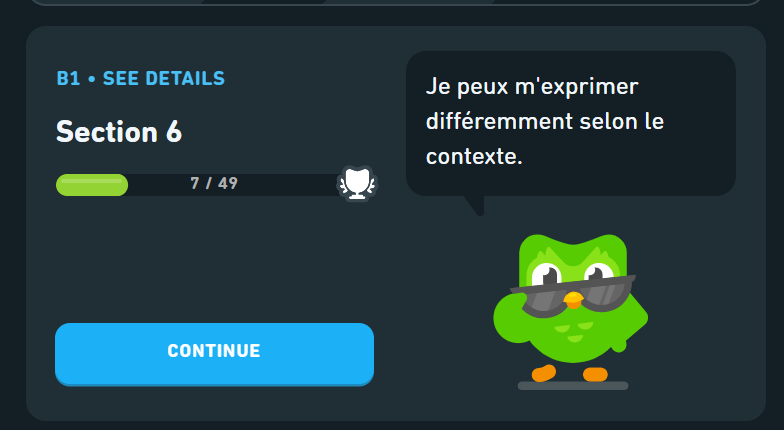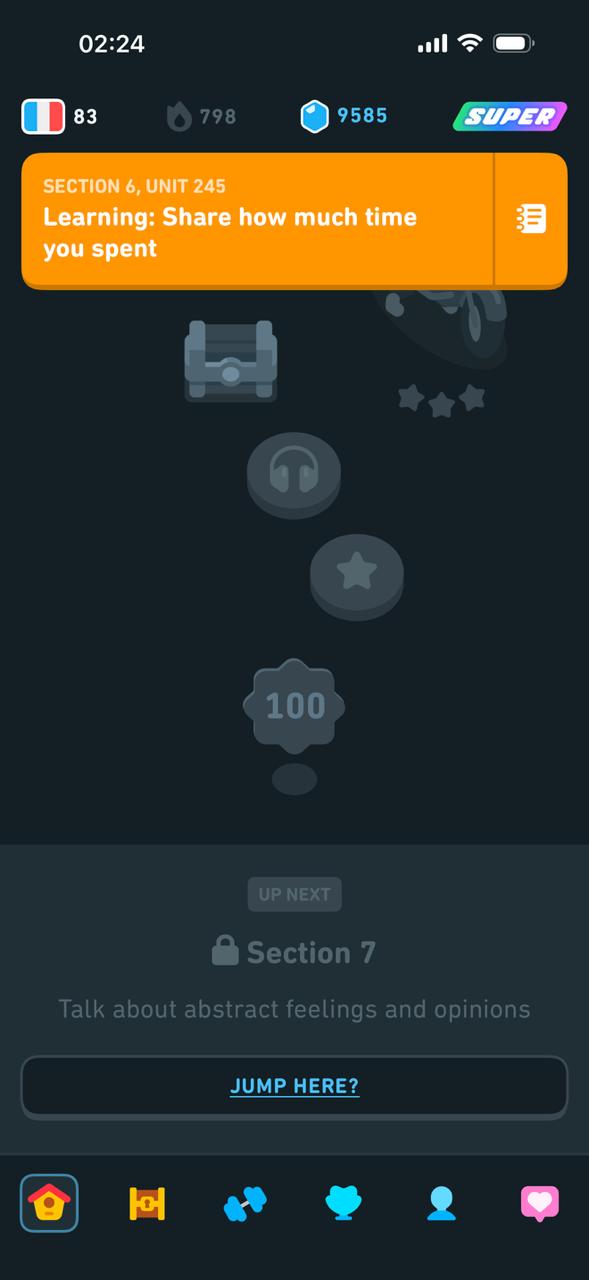Sur, sous, ou au-dessus? Lessons from Sticky Notes Gone Wild!
Last week, I was living La vie en rose—learning French through songs, Duolingo, and a touch of Taylor Swift chaos.
This week, pedal-to-the-metal, Taylor Swift chaos hit full throttle as her new album The Life of a Showgirl dropped. It’s honestly wild that our resident tortured poet shifted gears to delivering pure summer-drive bops. And apparently, I’ve picked up her habit of using way too many car metaphors and imagery. I call it my august era (remember when I pulled up and said, “get in the car“).
But sadly, my French learning took a bit of a backseat.
Well… almost. Because even when Taylor’s blaring through my headphones, my sticky notes were right there staring me down. Last week I promised to share what happened when I decided to label things in my apartment with Post-it notes.
📝The Labelling Launch
So…I went on a mini labelling spree. I already knew some words like le frigo (the fridge), le placard (the cupboard/closet), le lit (the bed), la table (the table), la porte (the door), l’étagère (the shelf), la fenêtre (the window)…
It seems I didn’t know much. So I went ahead and learnt these:
un balcon (balcony),
un sous-sol (basement),
un réveil (alarm clock),
un oreiller (pillow)—the Post-it unfortunately didn’t remain stuck for long 😢,
une commode (dresser)—I laughed out loud as I used to think this meant a toilet even in French,
une moquette (carpet) and un tapis (rug)—I used to think both carpet and rug were called tapis. Foolish me! But I must also give myself grace as I had never seen carpet-covered floors before coming to Canada. Apparently, a carpet is immovable and stuck to the floor. Thanks Linguno for clearing my confusion. I might give this platform a proper try soon.
Note: These are only some examples. I wanted to add photos but decided against it as there would be too many. Also, shout out to this handy list from the Lawless French website.
Soon, my apartment looked less like a cozy living space and more like a French kindergarten classroom. But I loved it. Every time I walked around, I was surrounded by vocabulary. I didn’t even realize I was learning; it just started to stick (pun 100% intended).
I caught myself saying things like je vais au frigo instead of “I’m going to the fridge.” It was such a small moment, but that’s when I realized the sticky notes were doing their magic: I was thinking in French.
Then, in true Taylor Swift poetic fashion—as she looks in people’s windows—I was sitting by my own window writing, and thought I’d try to describe it in French: je regarde dans la fenêtre. Turns out… I used the wrong preposition. It should be je regarde par la fenêtre (“I’m looking through the window”). One little word, and suddenly I was learning that par expresses movement or passage—like looking through the window—whereas dans would have meant I was looking inside the window frame itself (which is nonsensical).
That’s when I realized, once again, French had to remind me who’s boss. French prepositions are sneaky…
🟡The Preposition Plot Twist
Everything was going great, until I got stuck on where things were.
It started when I labelled my lamp. Should I say la lampe est sur la table or la lampe est au-dessus de la table?
Cue my confusion.
To my English-speaking brain, both mean “the lamp is on the table,” right?
Wrong.
Here’s what I learned (and re-learned, and muttered to myself multiple times around my apartment):
-
sur = on (touching), e.g. → Le livre est sur la table. (The book is on the table.)
-
sous = under, e.g. → Le chat est sous la table. (The cat is under the table.)
-
au-dessus de = above (not touching), e.g. → La lampe est au-dessus de la table. (The lamp is above the table.)
See the difference? Sur is for contact. Au-dessus is when something hovers, floats, or sits just out of reach—like that one cookie jar you swore you’d hide from yourself.
It’s subtle, but these little distinctions make French feel alive to me. There’s a kind of precision in how it describes space—like the language is encouraging you to look more closely at how the world is arranged.
🟢The Bigger Lesson Behind the Sticky Notes
This sticky note project started as a way to memorize vocabulary, but it turned into something way deeper. It made me realize (again) that learning French isn’t about memorizing words in isolation—it’s about understanding how they live in a sentence, in a space, and in your daily life.
Also, turns out prepositions are sneaky little devils. They seem harmless until you realize that dans, sur, sous, entre, derrière, and au-dessus all play by their own rules. I even caught myself muttering, “No, the mug isn’t sur the counter. It’s dans the cupboard!”
I think my sticky notes are laughing at me.
💬Community Corners & Duolingo Discoveries
Even though my apartment looked like a fluorescent French jungle this week, I didn’t ignore my trusty sidekick—Duolingo. I couldn’t quite level up my score from 83 to 84, but I did make progress: I finished 5 out of the 10 units needed to move up. Slow and steady (and slightly stubborn) wins the race, right?

This is because a lot of my practice this week focused on listening exercises, and they don’t count toward course progress (they just add XP points). I keep getting tripped up by similar sounding verb conjugations, e.g., the difference between ils deviendraient (“they would become”) and il deviendrait (“he would become”). The truth is—they sound almost identical when spoken quickly. Context is the only thing that gives it away, which made me feel a little better about mixing them up!
Then I stumbled on a Reddit post that made me feel seen. The original poster shared that Duolingo marked their answer wrong for writing en général, elle se couche très tard instead of en général, elles se couchent très tard. Commenters pointed out that both could technically be right—it just depends on context. Reading through that thread reminded me that sometimes, when I think I’m “hearing wrong,” I’m actually understanding correctly, just not in the way the app expects.
Speaking of Duolingo, there’s been some drama in the community lately. Another post I came across talked about how Duolingo is changing course structures—splitting larger units into many smaller ones. For example, Section 6 (where I currently am) has 49 units on Android and the web version, but a whopping 245 units on iOS! Since I use both devices, I can actually see the difference: the iOS version feels a bit “watered down,” with smaller bite-sized units.
Here’s screenshots as proof!

As you can see, it says I am on Section 6 Unit 7 now (and there’s only 49 units). But on my iPhone:

Section 6 has ballooned to 245 units!
The Reddit discussion suggested that these changes might be Duolingo’s way of “stretching” progress—more units mean more time, more ads, and more temptation to go premium. The OP even said it feels like the company “hopes you never actually finish a language.” That’s a bit harsh, but it did make me think about how gamified learning sometimes walks a fine line between motivating and manipulating.
Still, one user summed it up perfectly:
Duolingo has made questionable decisions when it comes to making language learning less accessible to those who are unable to afford it. However, Duolingo literally adding content (new words and phrases 🤯) is not part of the issue.
I liked that perspective. It reminded me that even when apps change, the real power of learning lies in consistency, not design tweaks. Personally, I actually prefer the smaller units on the iPhone version. The shorter lessons mean I get more repetition on a tighter set of words and phrases—and that’s way more effective for really drilling concepts in.
And as I start to explore more “real” French beyond the apps, I’m turning toward YouTube for context and culture. This week, I discovered a channel called Roya. She makes videos about the French language and culture, especially how it compares to English. Her videos are fun, conversational, and honest, and I’m planning to dive into more of her content next week as part of my learning routine.
I will also be revealing some trade secrets…
✨ Sneak Peek: What’s Coming Next Week
Next week, I’ll reveal some secrets to why Duolingo actually works for me (and why I don’t hate the “grind” as much as Reddit seems to). But for that, you’ll have to stay tuned…
Spoiler: I… Just kidding! 🤣
It’s a weird mix of chaos and immersion — and next week, I’ll share how that’s turning my daily scrolling habits into surprise French lessons.
👋🏼Bye for now
My apartment may be 80% covered in fluorescent paper right now, but my French is definitely brighter for it. Next up, I’m planning to experiment with French YouTube channels and podcasts to see how much real conversation I can understand (and how long it takes before my brain melts).
Until then, I’ll keep my sticky notes where they are—quietly teaching me prepositions one object at a time.
Living my grammatically precise French learning era,
Dishant
10 thoughts on “Sur, sous, ou au-dessus? Lessons from Sticky Notes Gone Wild!”
Hi Dishant!
This is such a well written post! In my third year of University I did the French As A Second Language Certificate program, and your writing took me back to when I also experienced those struggles. In all honestly, I still have many of those struggles! Especially with those sneaky propositions! But I love how you are trying to immerse yourself by covering your home in the language. WordReference is a very helpful app if you ever need to look up a word in a pinch!
Hi Daegan,
Thank you! The struggle is real and also relatable. You inspire me and I really hope to get a similar certification someday. I looked into WordReference and it’s a real gem. Thanks a lot for suggesting that!
Hi Dishant,
It is great that you were able to keep up with learning French even with Taylor Swift’s new album release last week! Duolingo is such a fun way to learn languages and I like how you have explained some of the changes going on with the Duolingo app adding content. It seems like such a cool idea to use Post-It notes to remind you what each item is. I totally thought tapis meant carpet too from Core French classes in elementary school when the teacher would get all the students to sit on the carpet for various activities. I have come across a few different Youtube series for learning French in conversations called Easy French and Oh La La, I Speak French if you find either of those helpful.
Hi Carly,
It was really hard, especially as Taylor released an album full of earworms and bangers. I had to rely on my resilience to keep learning productively. Duolingo has its cons, but it helps me hang in there.
That tapis thing really blew me away but I’ll never forget it. I wish I had some childhood core memories of learning French, and next week, I will mention the reason I don’t.
Also, thanks for the suggestions. I’ll look into both Easy French and Oh La La, I Speak French. Sounds fun!
Bonjour Dishant!
I am excited to hear about your journey in French. I actually paused my education degree after year two to complete my certificate in French as a Second Language through La Cité. It was a hardcore program, and I felt like I was in over my head many days. It’s great to hear you are already thinking in French. For me, I would say I didn’t do so until November, and I was completely immersed in it from 8 until 3:30 pm every single day. Usually, I would hear the phrase, translate it into English in my head, think of my response in English, and then translate it into French. It was an extremely long process.
Verb conjugation is a very difficult thing to master, especially since English is a non-gendered language, and French is. The whole concept of it is hard to understand. After a while, though, it will be something that comes naturally. The key thing to remember is it is the word itself that is gendered, so once you learn to recognize those gender patterns in spelling, the conjugation comes pretty quickly after that. To this day, reading and writing in French is still ingrained in me, but my speaking and listening skills have gotten very rusty. The best thing you can do when learning a new language is to immerse yourself in it entirely and force yourself not to rely on translation. That may be hard when you are on this learning journey yourself, but podcasts, TV shows, and music are all very helpful tools, and it seems like you are already integrating that into your practice.
Bonne chance!
Bonsoir Jessalyn,
I had looked into that course too! It would have really helped me with the kind of immersion I am seeking, but I guess it’s not too late. I think the more I immerse myself, the more I start thinking in French. I’m confident that the verb conjugations will begin to come naturally with it. I’m also coming up with some shortcuts and tricks to remember genders, and I might share those in detail in an upcoming post, so stay tuned! Until then, please share any tips you might have.
Also, thank you so much for sharing your experience. Incredibly inspiring! It’s reassuring to hear that thinking directly in French is something that comes with time and immersion, even if it’s a slow process at first. I can totally relate to the mental gymnastics of translating back and forth in my head. That’s exhausting but also kind of fascinating.
Your tips about verb conjugation and recognizing gender patterns are super helpful. I’ll definitely keep them in mind as I continue practicing reading, writing, and speaking. Podcasts, TV shows, and music have already become staples in my routine, and it’s great to hear they align with what worked for you. I’m also trying to give up the crutches of subtitles and train my ear to understand French naturally. It’s challenging, but I can already feel it making a difference.
Merci beaucoup and bonne chance à vous aussi!
Hey Dishant
It’s amazing how creative your approach to learning French has become! Using sticky notes around your apartment to reinforce vocabulary and prepositions is such a hands-on, immersive way to practice, and it’s clear it’s helping you think in French naturally. I love how you noticed subtle differences, like “sur” versus “au-dessus de,” showing how precision in language can deepen understanding. Your integration of apps, videos, and real-life context demonstrates a smart, multi-layered learning strategy. The way you reflect on challenges and celebrate small victories makes this method feel both effective and motivating for anyone looking to truly internalize a new language.
Thanks Neeraj, creativity is just another tool to keep me motivated. I need to think in French more and maintain that as the first layer of my multi-layered strategy. I am glad the difference between sur and au-dessus was clear, it definitely took me a while.
Hey Dishant,
This was such a fun and creative update! I love how you turned your whole apartment into a French classroom with sticky notes — that’s such a smart and practical idea. The way you explained the difference between sur and au-dessus de was really clear, and I learned something new too! It’s great that you’re finding ways to mix learning with your daily life. Can’t wait to see how your YouTube and podcast experiments go next!
Thanks Roop! I love me some practical learning. I am glad the difference between sur and au-dessus was clear, it definitely took me a while. Stay tuned as I reveal a secret next week.